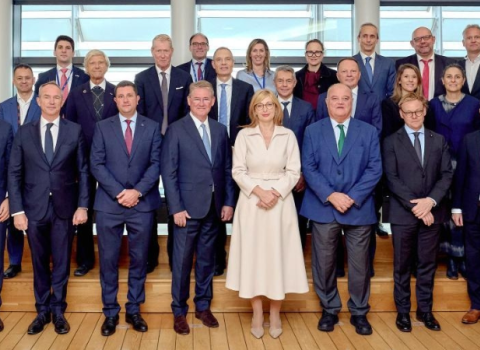Internet access lets consumers do lots of things that service providers used to – banking, booking holidays, shopping. We do more for ourselves and feel better about it because we are empowered. But many older people – who in many senses would have most to gain from such services - are excluded.
The European Union’s Ambient Assisted Living (AAL) Programme has a brief to help close the digital divide and increase market acceptance of products and services designed to help older people to live independently and improve their quality of life.
Amongst the projects funded by AAL is GoldUI, which aims to help 70 – 85 year-olds link up to the Internet. Rather than needing a computer, the project is providing access through more familiar and less support-intensive devices such as bedside radios, televisions and telephones. These are adapted with simple, clear buttons and built-in communications capabilities “What we are doing is providing new ways to interact with these devices,” said Laurence Pearce of XIM Ltd, an artificial intelligence and interface design specialist that is one of the partners in GoldUI.
Alongside designing the interface, GoldUI will provide tools to help relatives or carers to build a user’s profile, providing access to services such as home banking, shopping, repeat prescriptions. “Younger relatives can configure and set up services through the GoldUI interface, dealing with passwords and so on, but with no need to do the technical support or training an older relative to use a computer,” Pearce said. The user profile is stored in the cloud, removing the need for any local data storage.
Customising the interface
The tools also allow the interface to be customised with different colours and font sizes. The specification can evolve over time as needs change. “For example it can go from text to speech if a user’s eyesight deteriorates,” Pearce told delegates at the Assisted Living Innovation Platform (ALIP) 2013 annual conference in Liverpool on Tuesday (5 March). ALIP is the UK national programme that parallels and jointly funds project supported through ALL.
GoldUI is a two-year project which began in July 2011 with four partners, XIM, the Italian telecoms provider Tiscali, HIB, (HI Iberia Ingenieria y Proyectos SL) a computer services and cloud storage specialist SME based in Madrid, and FeSalud Research Centre in Malaga, Spain, which specialises in research into assistive living.
It’s now three quarters of the way through the project, Pearce said the most significant outcome has been the end user engagement. Through research carried out in a ‘Living Laboratory’ at the FeSalud centre in Malaga the views of potential users from a number of different countries and cultures have been fed into the design of the interface. The prototype of the interface has been through three iterations as a result. “I’ve been bowled over by the creativity, the constructive feedback and the way in which [participants] have been throwing back technical challenges,” Pearce said.
The need to improve access to the Internet is obvious. This is not only so that older people can have the convenience of online services most of us take for granted and of using it as a channel to stay in touch with family and friends, but also allowing ease of to access services specifically designed to help people remain independent - to enhance life in times of infirmity, even.
Low market uptake
However, designing and marketing products that are often seen as disability aids, is notoriously difficult. After 20 years of developing, testing and demonstrating telehealth and telecare services, market uptake remains low. There are about one million users of telecare services in the UK, which along with Germany, Spain and the Netherlands is one of the most advanced markets in Europe.
Pearce said that the support from AAL has helped GoldUI to develop simple-to-use devices that have been demonstrated to appeal to older people. The model of involving younger relatives and working with Tiscali has helped in shaping products that can be sold through a telecoms provider, whilst leaving open the traditional route to market through social services or local authority procurement.
The end user involvement is critical. “Working with older people it’s so easy to make assumptions,” Pearce said. “User involvement pushes us, because you can edge back into being too techie.” Involving end users has enable GoldUI to maintain a strong focus on what the market needs.
The AAL programme has created a community of 1,500 people across Europe who are involved in the field of assistive living. “Every project has strong end user involvement, which is great – it’s not technology push, it’s co-design,” Pearce said.
In the UK there are eight million adults with no access to the Internet. As things stand, the only reason for this figure to go down is as old people who are not connected die. The situation is replicated elsewhere in Europe.
So, there is a long way still to go, and a lot of technological potential lying under-utilised. Which is why SMEs like XIM and HIB need a hand in the development of assistive products that will meet the needs - and allay the fears of older people – and increase market acceptance.





 A unique international forum for public research organisations and companies to connect their external engagement with strategic interests around their R&D system.
A unique international forum for public research organisations and companies to connect their external engagement with strategic interests around their R&D system.